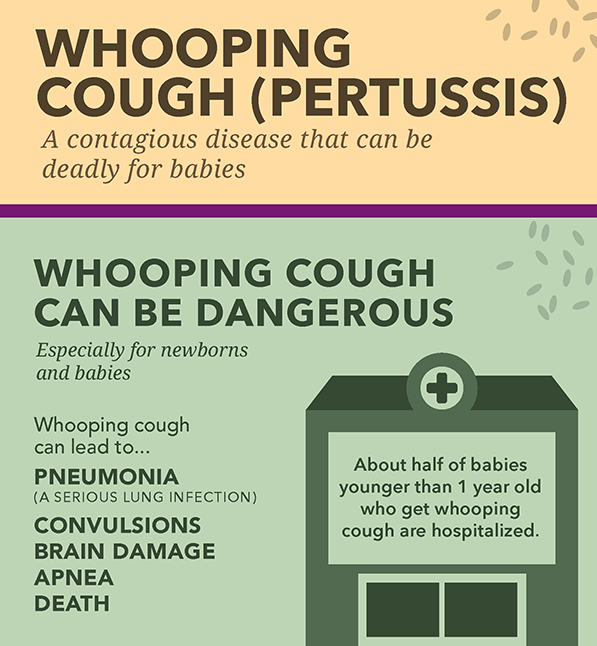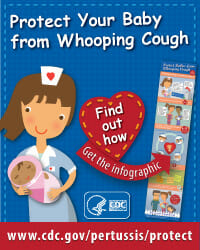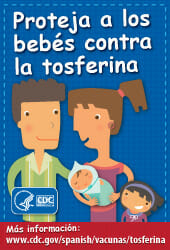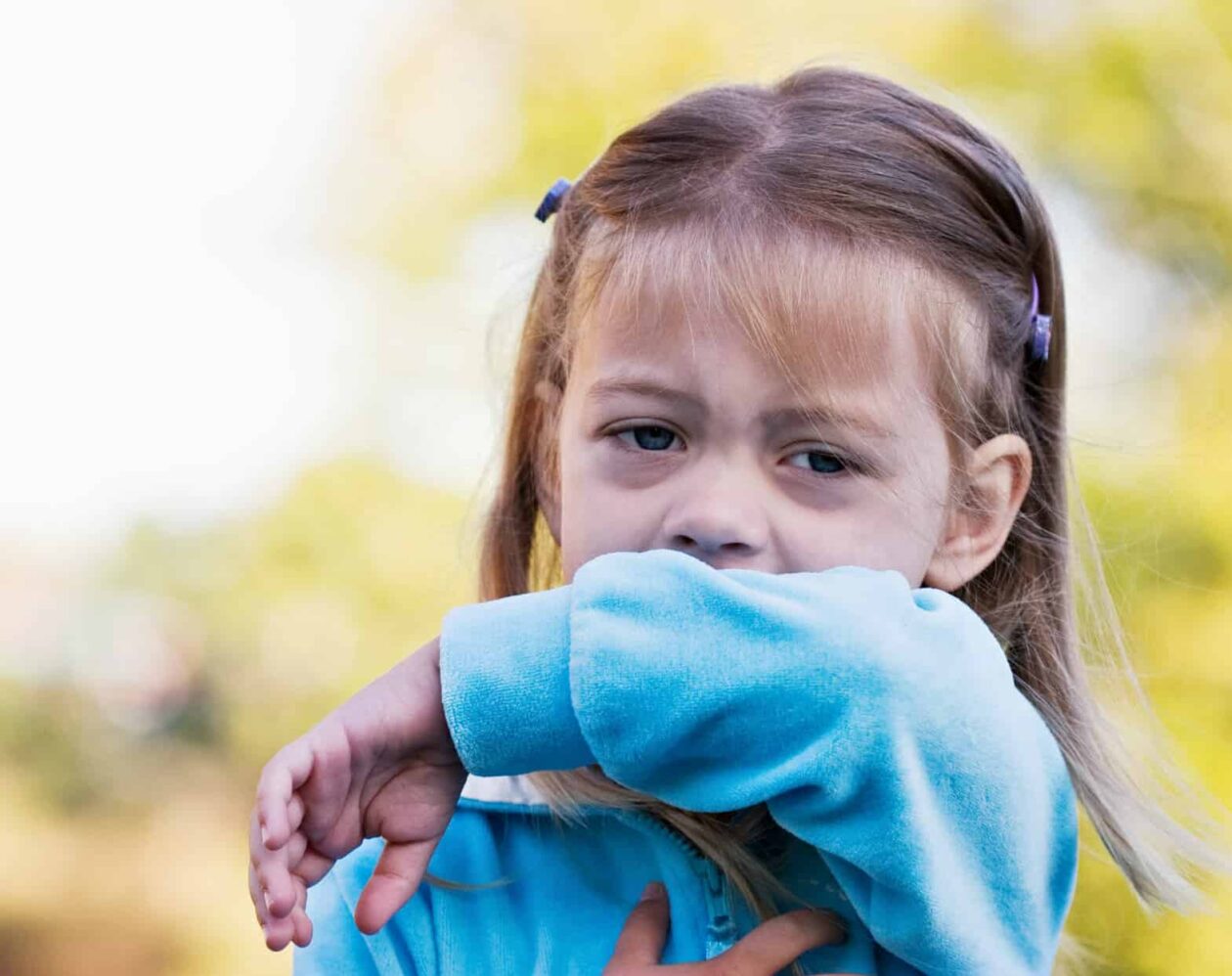
Whooping Cough was first described more than 1400 years ago in China by Chao Yuanfang:1)
 Imperial Physician of the Sui Dynasty, who described a ‘100 day cough’. Pertussis was mentioned again more than 1000 years later (1578) in France by Guillaume De Baillou2) who gave a detailed description of an epidemic of the disease in Parisian children. The cause of the disease was discovered in 1883 by a German scientist, Carl Burger, who identified the bacteria (under a microscope) that causes Pertussis. An effective vaccine against the Pertussis pathogen was developed in the 1940s resulting in dramatically lower numbers of infections and deaths.
Imperial Physician of the Sui Dynasty, who described a ‘100 day cough’. Pertussis was mentioned again more than 1000 years later (1578) in France by Guillaume De Baillou2) who gave a detailed description of an epidemic of the disease in Parisian children. The cause of the disease was discovered in 1883 by a German scientist, Carl Burger, who identified the bacteria (under a microscope) that causes Pertussis. An effective vaccine against the Pertussis pathogen was developed in the 1940s resulting in dramatically lower numbers of infections and deaths.
In the Pre-Vaccine era, it has been estimated that approximately 200,000 children were infected every year in the United States and approx. 9,000 died from Pertussis. In our modern era we see only about 10,000 to 40,000 cases reported each year with (unfortunately) up to 20 deaths. Tiny numbers compared to the pre-vaccine era, but tragic nonetheless as most if not all might be preventable with vaccination.3)
Now, more about the 8 Facts You Need To Know:
1: Whooping Cough has become epidemic in some states in recent years
F rom 1965 – 2002 there were never more than 10,000 cases of Pertussis reported in the U.S. In 2012 there were approx. 48,000 cases reported. Clearly, something has changed. Take a look at some headlines from recent years:4)2012:
“Whooping Cough Epidemic Declared in Vermont”
“Cutbacks Hurt a State’s Response to Whooping Cough“
2013:
“Florida Whooping Cough Outbreak Fuels Anti-Vaxxers”
2014
“Vaccination Waivers Put Hundreds of Michigan Communities At Risk of Disease Outbreaks“
“California Declares Whooping Cough Epidemic”
2017:
“Whooping Cough Cases Double in Indiana in a Year, Prompting a Call to Vaccinate”
Trends
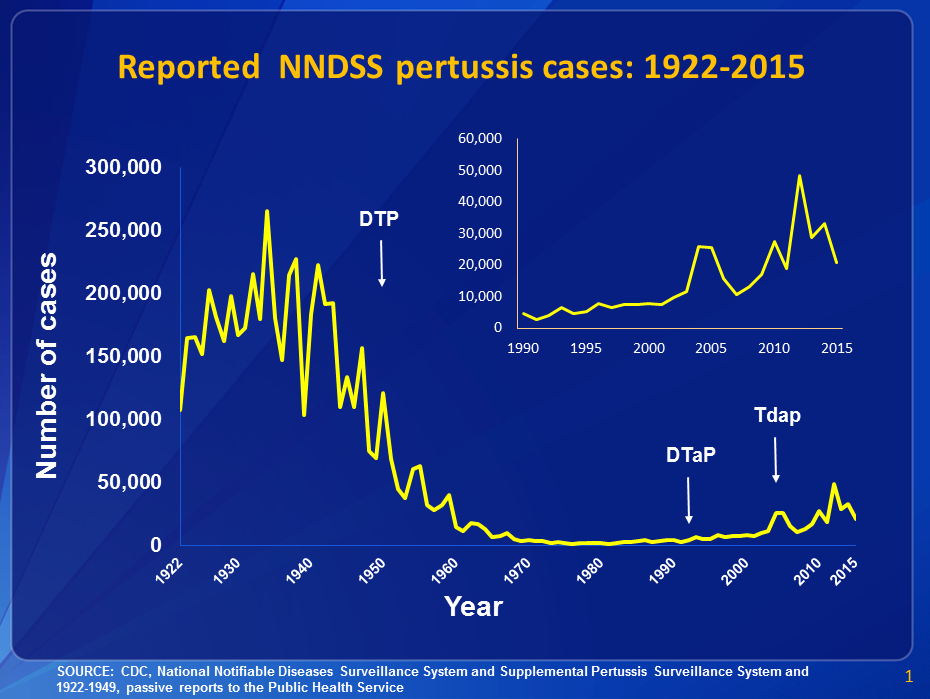
This simple graph shows trends of pertussis cases over time. Note the spike in cases around 2001-2002 and the upsurge in cases through 2015.5) This upward trend in pertussis cases coincided with the discontinuation of the old DTwP vaccine and introduction of the new Tdap vaccine. What this chart doesn’t show are trends in vaccination non-compliance, which undoubtedly is a contributing factor to the increased number of infections.
For a more detailed breakdown6), check out the pertussis data for 2016, courtesy CDC (link to PDF). View case counts and incidence by state and age, DTaP vaccination history of cases, and pertussis-related deaths.
As you can see, MA and CT rates are in line with national averages, whereas we see a big jump in the number of cases just north of us in VT. Reason? Very possibly, less compliance with vaccination.7)
2: Whooping Cough is highly infectious and infected people can remain sick for months.
P ertussis is an upper-respiratory infection spread by coughing or sneezing which causes airways to swell. Most people are contagious for about two weeks after their symptoms first appear. There are 3 generally-recognized stages of this illness:8)
Although this seems a relatively short period to spread the disease, the symptoms often last for many weeks or months, characterized by severe coughing fits. The infographic, below, illustrates the dangers of Pertussis, symptoms, how it’s spread, and information about exactly when infants – 6 year olds should get the DTaP vaccine. Click the infographic , below for the full-sized image:9)
3: Whooping Cough symptoms at first look like the common cold or flu. It can be difficult to Diagnose.
T he first symptoms of pertussis infection are often mistaken for a common cold:- Runny Nose
- Sneezing
- Mild Cough
- Low-grade fever (sometimes)
Symptoms gradually become much worse, with violent coughing fits that can cause injury and frequently lead to vomiting.10)
The distinctive ‘Whoop’ sound that gives this illness it’s common name can be heard in this
Video:
Video Source
“Recognizing and Treating Whooping Cough”
Uploaded by: Mayo Clinic
Published on Oct 8, 2013
YouTube.com (Standard YouTube License)
4: Antibiotics are not highly effective against Whooping Cough unless given at a very early stage of infection.
O nce Whooping Cough has been diagnosed, it’s important to take the prescribed antibiotics as they can lessen the severity and duration of the illness, as well as help to prevent infecting others.5: The Whooping Cough vaccine only protects for a limited time and booster shots are needed at regular intervals.
W hile the current Whooping Cough vaccine is considered to be safer, with fewer side-effects than the original vaccine, it also seems to be less effective and doesn’t protect for as long as the older vaccine.11) To make a long story short, this is what scientist think is the reason that Whooping Cough has made such a strong comeback: The original vaccine (introduced in the 1940s) was a whole-cell (wP) vaccine made from inactive, dead bacteria. While this DTwP vaccine was extremely effective, it also was associated with reports of side effects and even (rarely) severe reactions. To address the issue of adverse reactions to the original vaccine, a new acellular vaccine was developed. This newer vaccine (Tdap) was adopted by doctors in the U.S. in 1997 and is made from isolated proteins of the B. pertussis bacterium. Although the new vaccine IS effective, it’s now known that the protection that it offers fades after about 3 years, highlighting the importance of sticking to a strict vaccine schedule, including booster shoots for preteens and adolescents.12) After you receive your Tdap, you will need a Td booster every 10 years6: Whooping Cough can be life-threatening to babies. Pregnant women should get the Tdap vaccination, which will pass antibodies against Pertussis to her unborn fetus.
I nfants under 6 months of age are at the highest risk of dying from Whooping Cough. Part of the problem is that a baby gets his/her first vaccination at 2 months. There’s a windows of vulnerability. Ideally, all pregnant women should received a Tdap vaccine in the late second (or early third) trimester. This will allow the mother to develop antibodies to B. Pertussis and pass them along to her baby via the umbilical cord. When the baby is born, it already has a level of protection against Whooping Cough.13) CDC has a GREAT infographic about protecting babies (Clicking the thumbnails will open the infographic in a new tab.) !
Sadly, Whooping Cough, can be deadly to babies. In the video below, a young mother tells her tragic story of losing her baby to Whooping Cough.
Video Source
“Losing a Baby to Whooping Cough: One Woman’s Story”
Uploaded by: PBS NewsHour
Published on August 22, 2012
YouTube.com (Standard YouTube License)
7: Whooping Cough is commonly passed from family members to babies, so anyone in close contact with a baby needs to be vaccinated.
T raditionally, most cases of Whooping Cough in babies have been thought to have been transmitted from mother to her baby. While this is undisputedly a major source of infection for infants, a recent study has shown that, in fact, babies are more likely to become infected by their own siblings (especially in the 7-10 age range). This finding underscores the importance of keeping up-to-date with vaccinations/boosters for children of all ages.14)Video Source
“Pregnant? Help Protect Your Baby from Whooping Cough”
Uploaded by: Centers for Disease Control and Prevention (CDC)
Published on January 12, 2016
YouTube.com (Standard YouTube License)
Video Source
“Pertussis (whooping cough) PSA”
Uploaded by: MainePublicHealth
Published on June 7, 2012
YouTube.com (Standard YouTube License)
8: Whooping Cough can infect people of any age - it’s not just a childhood illness.
F or most people, one bout of Whooping Cough is one too many! Sufferers often describe the cough as the worst they have ever experience in their lifetime. While the risk of mortality is dramatically lower for children and adults than for infants, there are plenty of cases of people breaking ribs, blood vessels, even fracturing bones from the intense coughing fits associated with this illness. ALSO NOTE: Previous illness does not immunize you from future infections (i.e.being infected does not convey lifetime immunity. People can become infected with Pertussis more than once). For those who still believe that Whooping Cough is just a ‘Childhood Illness’, please watch this video – you’ll change your mind! (Warning: Not very pleasant and you’ll surely feel sorry for this gentleman who’s suffering from a very clear case of WHOOPING COUGH).15)Video Source
“Whooping Cough in an Adult”
Uploaded by: NEJMvideo
Published on January 13, 2012
YouTube.com (Standard YouTube License)
Call Now to Schedule a Tdap Vaccination!
Tip: Why not print this article and bring it with you to discuss with your provider:
[printfriendly]
Resources
© Can Stock Photo / StephanieFrey
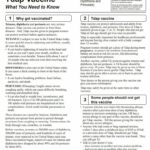 Tdap Vaccine Information Statement:
Tdap Vaccine Information Statement:
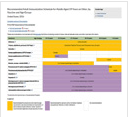 Adult Immunization Schedule, by Vaccine and Age Group
Adult Immunization Schedule, by Vaccine and Age Group
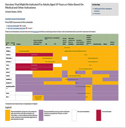 Adult Immunization Schedule by Medical and Other Indications
Adult Immunization Schedule by Medical and Other Indications
Sources and References
| ↩1 | (2016, July 1) Pertussis: Microbiology, Disease, Treatment, and Prevention , American Society for Microbiology. Retrieved January 20, 2018 from: https://www.niddk.nih.gov/health-information/diabetes |
|---|---|
| ↩2 | (2017) The History of Vaccines. The College of Physicians of Philadelphia. Retrieved January 21, 2018 from: https://www.historyofvaccines.org/content/guillaume-de-baillou |
| ↩3 | (2017, August 7) Pertussis Frequently Asked Questions, CDC. Retrieved January 22, 2018 from: https://www.cdc.gov/pertussis/about/faqs.html |
| ↩4 | (2015, April 23) Whooping Cough Outbreaks Traced to Change in Vaccine, Live Science, from: https://www.livescience.com/50594-pertussis-acellular-vaccine.html |
| ↩5 | (2017, August 7) Surveillance and Reporting, CDC. Retrieved from: https://www.cdc.gov/pertussis/surv-reporting.html |
| ↩6 | (2017, July) 2016 Provisional Pertussis Surveillance Report, CDC. Retrieved January 21, 2018 from: https://www.cdc.gov/pertussis/downloads/pertuss-surv-report-2016-provisional.pdf |
| ↩7 | (2012, December 13) Whooping cough epidemic declared in Vermont, USA Today. Retrieved January21, 2018 from: https://www.usatoday.com/story/news/2012/12/13/whooping-cough-epidemic-declared-in-vermont/1768527/ |
| ↩8 | (2017, August 7) Signs and Symptoms, CDC. Retrieved January 23, 2018 from: https://www.cdc.gov/pertussis/about/signs-symptoms.html |
| ↩9 | (2016, December 15) Whooping Cough Vaccine-Preventable Diseases Infographic, CDC. Retrieved January 20, 2018 from: https://www.cdc.gov/vaccines/parents/diseases/child/vpd-infographics/whooping-cough.html |
| ↩10 | 2017, August 7) Signs and Symptoms, CDC. Retrieved January 23, 2018 from: https://www.cdc.gov/pertussis/about/signs-symptoms.html |
| ↩11 | (2013, May 22) Whole-Cell Pertussis Vaccine: More-Durable Protection? NEJM. Retrieved January 23, 2018 from: https://www.jwatch.org/pa201305220000003/2013/05/22/whole-cell-pertussis-vaccine-more-durable |
| ↩12 | (2011, October 20) Whooping Cough Vaccine Protection Fades After 3 Years, Live Science. Retrieved January 23 2018 from: https://www.livescience.com/35923-whopping-cough-pertussis-vaccine-immunity.html |
| ↩13 | (2011, June 23) Whooping Cough Vaccine Endorsed for Pregnant Women, Live Science. Retrieved January 23, 2018 from: https://www.livescience.com/14736-meningococcal-vaccine-recommended-infants.html |
| ↩14 | (2015, October) Sources of Infant Pertussis Infection in the United States, American Academy of Pediatrics. Retrieved January 22, 2018 from: http://pediatrics.aappublications.org/content/136/4/635.long |
| ↩15 | (2012, June 21) Whooping Cough in an Adult. NEJM. Retrieved January 20, 2018 from: http://www.nejm.org/doi/full/10.1056/NEJMicm1111819 |


